The Aokigahara Suicide Forest: What Secrets Do the Silent Trees Guard?
The Forest in the Shadow of Mount Fuji



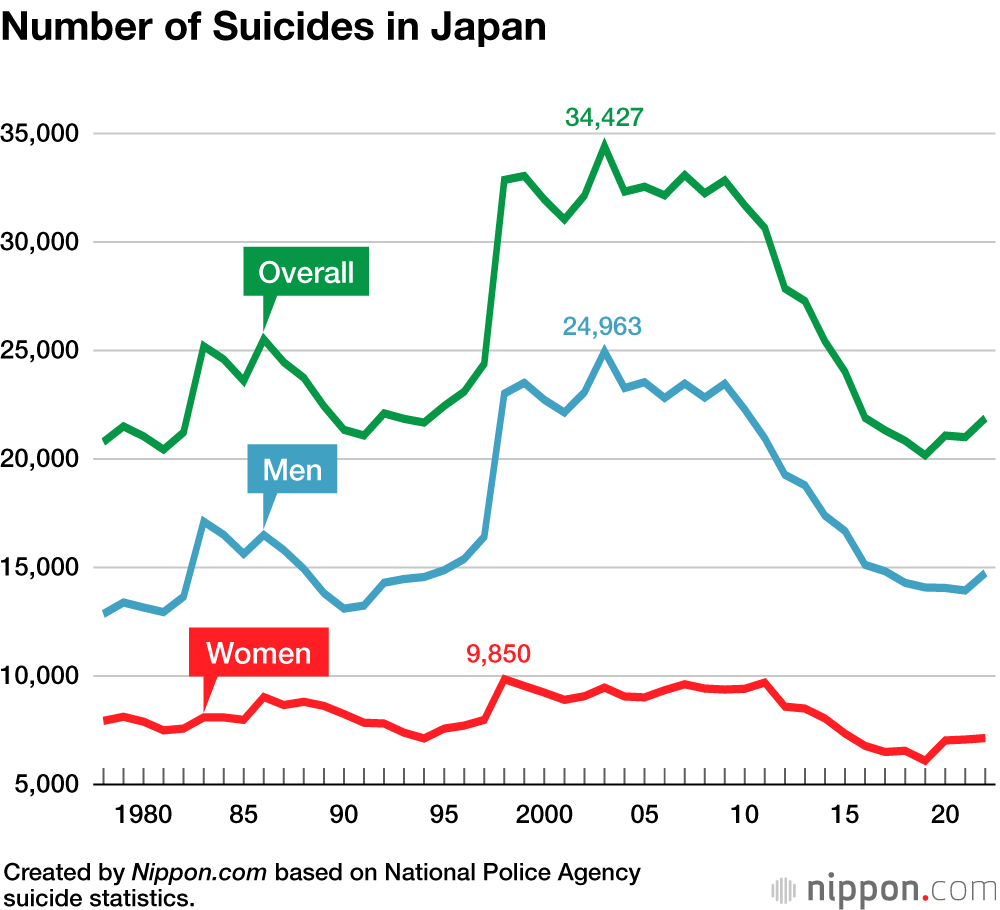

Jukai – The Sea of Trees
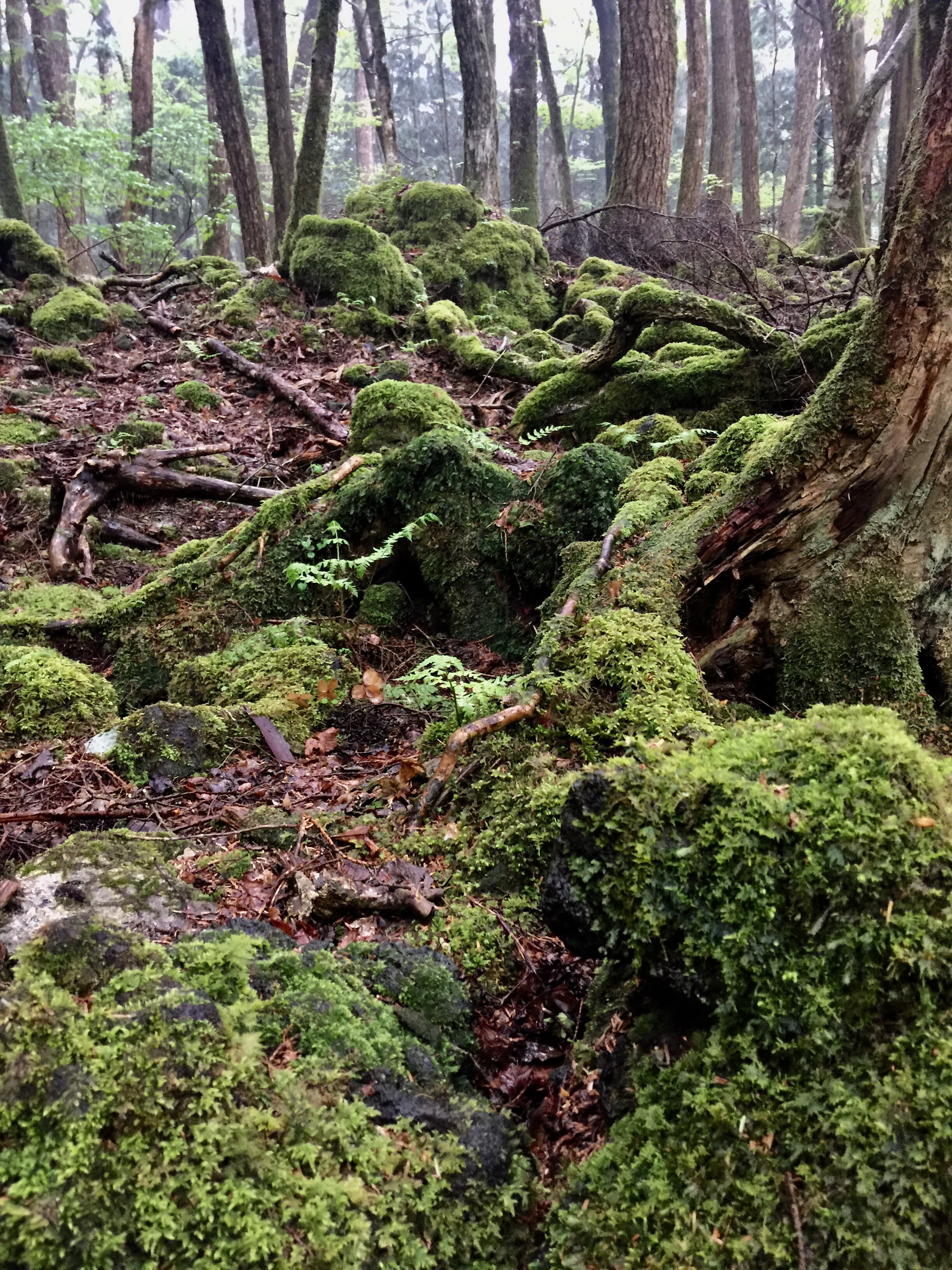
The alternate name for Aokigahara, 'Jukai' (樹海), means 'Sea of Trees'. This poetic term captures the impression of the forest's vastness and density, reminiscent of a sea stretching to the horizon. This metaphor is particularly apt, as the forest spans a significant area and is characterized by dense, nearly impenetrable vegetation.
The symbolism of Aokigahara's name also influences how it is perceived in Japanese culture. The forest, being a place of tranquility and escape from the everyday, is simultaneously an arena for dark legends and folk tales. Its image in Japanese culture is therefore full of contrasts – from a nature oasis to a place full of spiritual depth and dark secrets.
Geography and History of Aokigahara
 The Location of Aokigahara at the Base of Mount Fuji
The Location of Aokigahara at the Base of Mount Fuji
Aokigahara, often referred to as the 'Sea of Trees,' is located in the west of Yamanashi Prefecture in Japan, at the base of Mount Fuji – one of the most famous and revered peaks in the country. Its proximity to this iconic, snow-capped mountain adds an additional, mystical dimension to the forest. Mount Fuji, being an active volcano, is not just an important national symbol of Japan, but also a place of deep religious and cultural significance. The Aokigahara forest covers an area of about 35 square kilometers, creating a unique ecosystem that is home to many species of plants and animals.
 A Short History of the Forest
A Short History of the Forest
The history of Aokigahara dates back over 1200 years, to around 864 AD, when an eruption of Mount Fuji formed this area. The lava flowing from the volcano covered a significant part of the surrounding areas, creating a hard, rocky surface on which trees and vegetation eventually began to grow. As a result of this natural process, a dense, almost impenetrable forest was formed, known today as Aokigahara. The distinctive soil structure, rich in volcanic minerals, contributed to the creation of a unique landscape, dominated by uneven, moss-covered rocks, with trees seeming to grow straight out of the stone.
Formation from Volcanic Lava
The lava that shaped the terrain of Aokigahara solidified into unusual forms, creating a series of caves and tunnels. These natural rock formations have become one of the distinctive features of this forest, adding to its mysterious character. Many visitors are attracted to these caves, which, due to their history and unique geology, are the subject of scientific research and tourist interest. This forest, despite its dark reputation, is also a place of unique natural and geological values that attract scientists and nature lovers from all over the world.
Ancient Myths and Urban Legends
 Stories of Ubasute and Suicidal Practices
Stories of Ubasute and Suicidal Practices
One of the most disturbing elements of folklore associated with Aokigahara is the legend of Ubasute. According to this ancient Japanese story, in times of famine or other crises, some families took their elderly members to remote, secluded places - such as the Aokigahara forest - and left them there to die. This dark practice, though probably more myth than reality, has had a lasting impact on the perception of the forest as a place of death and despair. The contemporary association of Aokigahara with suicides may have its roots in this legend, making the forest a symbol of escape from the hardships of life and solitary end.
The Legend of Yūrei
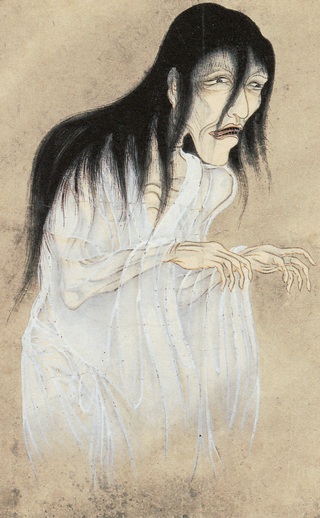
According to legend, Yūrei in Aokigahara appear mainly at night, though they are also seen during the day. They are often described as pale, translucent figures that move among the trees, remaining invisible to most people. Their presence is usually heralded by a sudden change in temperature or unexplained sounds, such as whispers or rustling.

In many stories, it is said that the Yūrei in Aokigahara are not malevolent, but rather express their pain and suffering. According to some beliefs, these spirits may even try to communicate with the living to convey their last message or warn against making tragic decisions. In Japanese culture, encountering a Yūrei can be interpreted as an important lesson about the transience of life and the significance of death.
The Mysterious Woman in White in Aokigahara
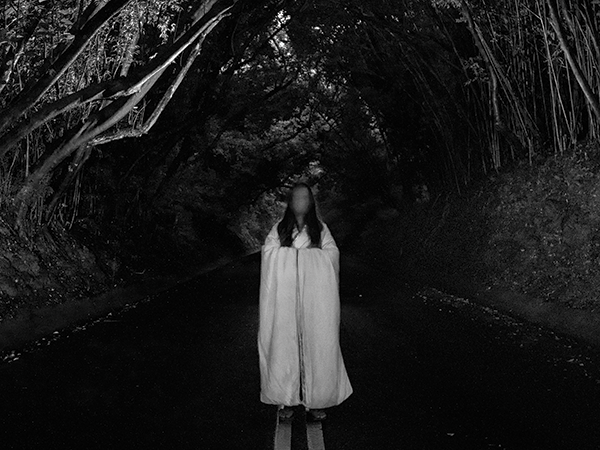
According to the stories, the Woman in White often appears unexpectedly, especially in the dark, secluded parts of the forest. Her presence is described as both mesmerizing and unsettling. It is said that she has a pale face and long, flowing hair, and her white robes gently sway in the quiet breeze.

The stories say that the Woman in White may try to attract the attention of lost or lonely wanderers, encouraging them to follow her, which often leads them deep into the forest, away from safe paths. Some witnesses report feeling hypnotized or compelled to follow her, despite inner fear and unease.

The Legend of Yamanba
In the Aokigahara forest, also known as the Suicide Forest, there exists a legend about a mysterious creature called Yamanba. 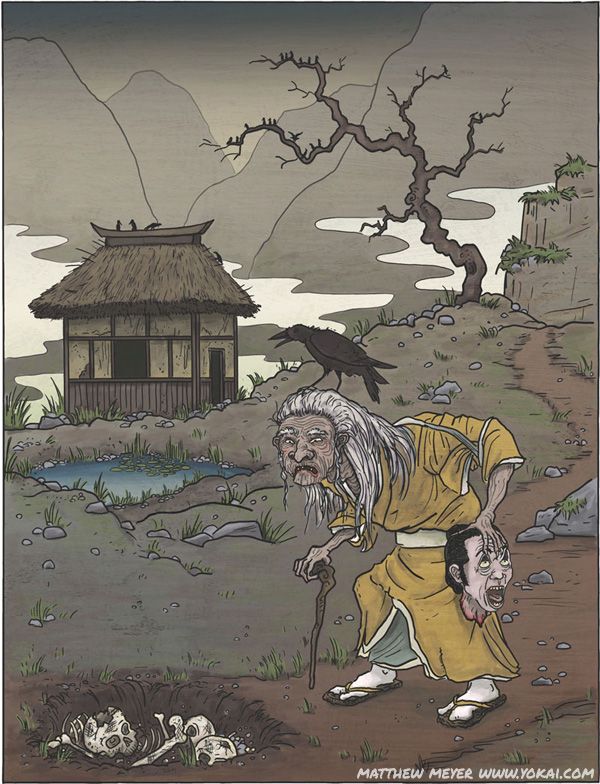
Yamanba appears to unsuspecting wanderers as a beautiful and tempting woman, dressed in traditional Japanese attire. Her purpose is to lure wanderers deeper into the forest, where they become victims of her cruel schemes. There are many stories about how Yamanba transforms into a ruthless and bloodthirsty creature once her prey is sufficiently far from civilization.
The legend of Yamanba serves as a warning against venturing too deep into the Aokigahara forest, which is already known as a place of numerous suicides and mysterious disappearances. Stories of lost souls and terrifying encounters with Yamanba remind people of the dangers lurking in this dark and mysterious forest.
Echoes of the Lost
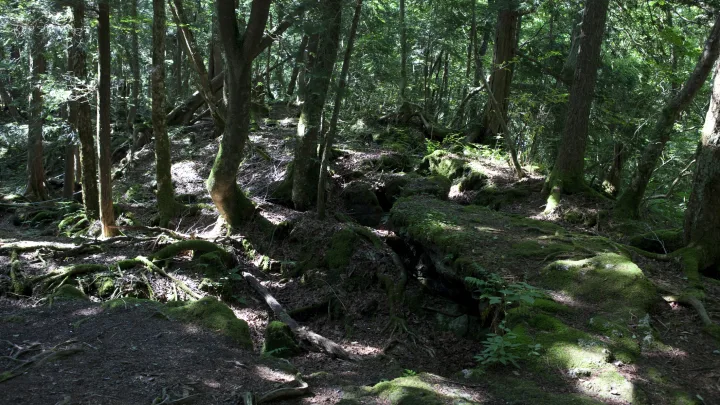
 Footsteps Behind
Footsteps Behind
Travelers and adventurers who have dared to enter Aokigahara often speak of a strange phenomenon of hearing footsteps right behind them, when no one else is nearby. It is said that these are the spirits of the suicides, following the living, perhaps wanting to warn them against a similar fate.
 Ghoulish Laughter in the Silence
Ghoulish Laughter in the Silence
There is also a story about ghoulish laughter echoing among the trees of Aokigahara. Some claim it is the spirit of someone who experienced madness in their final moments of life. This disturbing laughter, appearing suddenly and then disappearing, leaves bewildered witnesses in silence with goosebumps on their necks.
Lights without a Source
Among the tales about Aokigahara, there are also reports of mysterious lights that appear at night among the trees. Supposedly, these are luminescent apparitions that have no concrete source and move irregularly, creating the illusion of the presence of other people in the forest.
Aokigahara Suicide Forest in Popular Culture
The Suicide Forest of Aokigahara has long fascinated creators of popular culture and has inspired many artistic works. Its mysterious and dark reputation attracts creators who use its atmosphere to build intriguing narratives.
Manga/Anime:
 "Aokigahara" (Manga, 2011, Iqura Sugimoto)
"Aokigahara" (Manga, 2011, Iqura Sugimoto)
The manga "Aokigahara" is a dark tale about a group of people who accidentally find themselves in the Aokigahara forest. Each character has their own heavy secrets and past demons. The forest, full of ghosts and mysteries, forces them to confront their own fears and forgive each other.
"Yurei Attack: The Japanese Ghost Survival Guide" (Anime, 2012, Shinobu Muraki)
This documentary anime series explores various Japanese ghost legends, including stories related to Aokigahara. The guide to Japanese ghosts also features stories about the suicide forest and the spirits that are said to inhabit it.
Film:
 "The Forest" (Film, 2016, Jason Zada)
"The Forest" (Film, 2016, Jason Zada)
The movie "The Forest" is set in the Aokigahara forest and tells the story of a young woman who goes to the forest to find her missing sister. It's a psychological thriller that uses the mysterious aura of the forest to build tension and fear.
"The Sea of Trees" (Film, 2015, Gus Van Sant)
"The Sea of Trees" is a dramatic movie that also takes place in the Aokigahara forest. It tells the story of two men who meet in the forest and try to find the meaning of life in a place where many come to end theirs. The film explores the theme of suicide and hope in the context of the suicide forest.
Video Games
 "The Forest" (PC Game, 2014, Endnight Games)
"The Forest" (PC Game, 2014, Endnight Games)
"The Forest" is a survival horror game where the player takes on the role of a survivor of a plane crash who lands in a mysterious forest resembling Aokigahara. The player must survive, building shelter and fighting supernatural beings, creating an incredibly dark and disturbing experience. Aokigahara was reportedly an inspiration for the developers.
"Call of Cthulhu: Dark Corners of the Earth" (PC Game, 2005, Headfirst Productions)
This game, based on the works of H.P. Lovecraft, includes a sequence that refers to Aokigahara. The player visits the forest in search of the secrets it hides and must face dangerous circumstances and supernatural phenomena.
Contemporary Challenges and Preventive Actions

The Japanese government has undertaken several initiatives to reduce the number of suicides in Aokigahara and the country in general. In 2017, a plan was announced to reduce the suicide rate in Japan by 30% over the next decade. As part of this plan, specific steps were taken, such as increasing control over access to the forest.
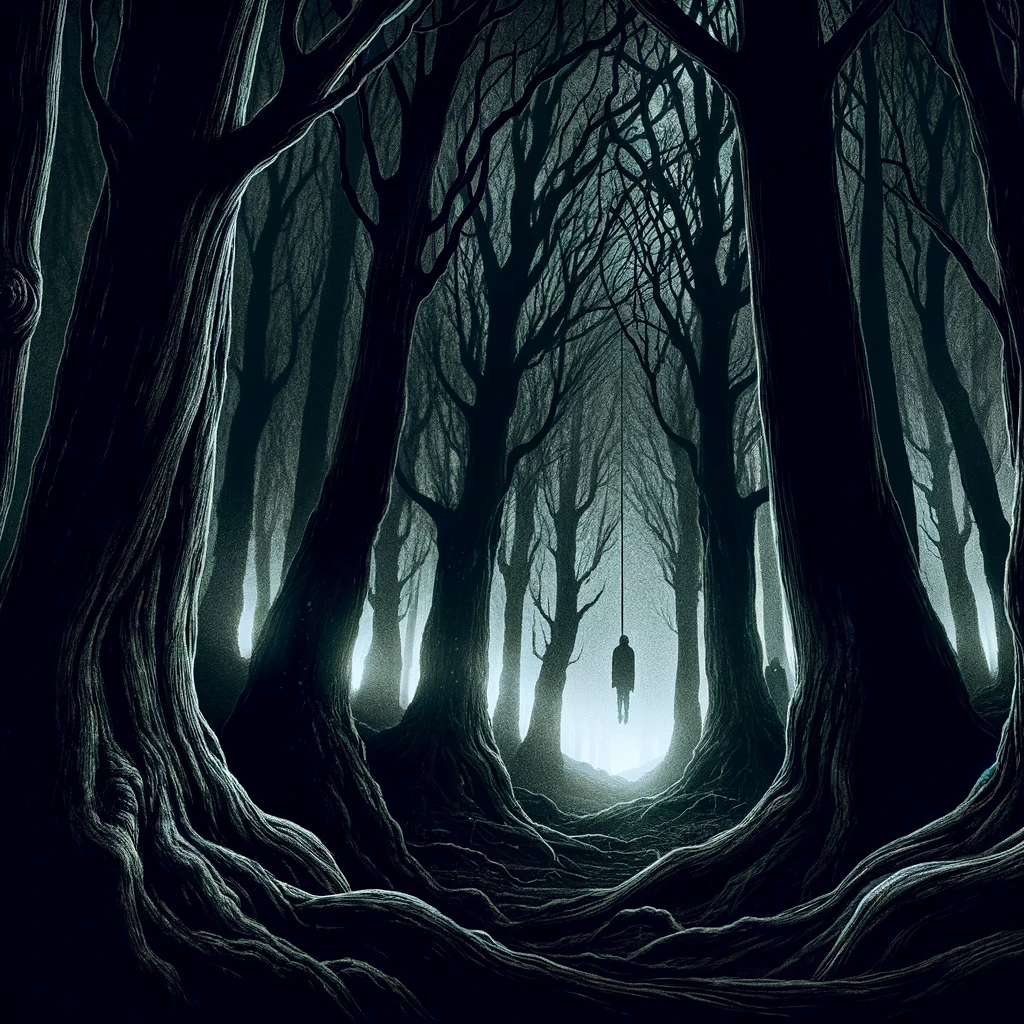

The Dark Depths of the Suicide Forest

An interesting feature mentioned by visitors and scientists is the forest's unique acoustics. Dense trees and lush vegetation create a unique atmosphere where even the slightest rustle can sound louder than usual, and echoes carry the lightest sounds far.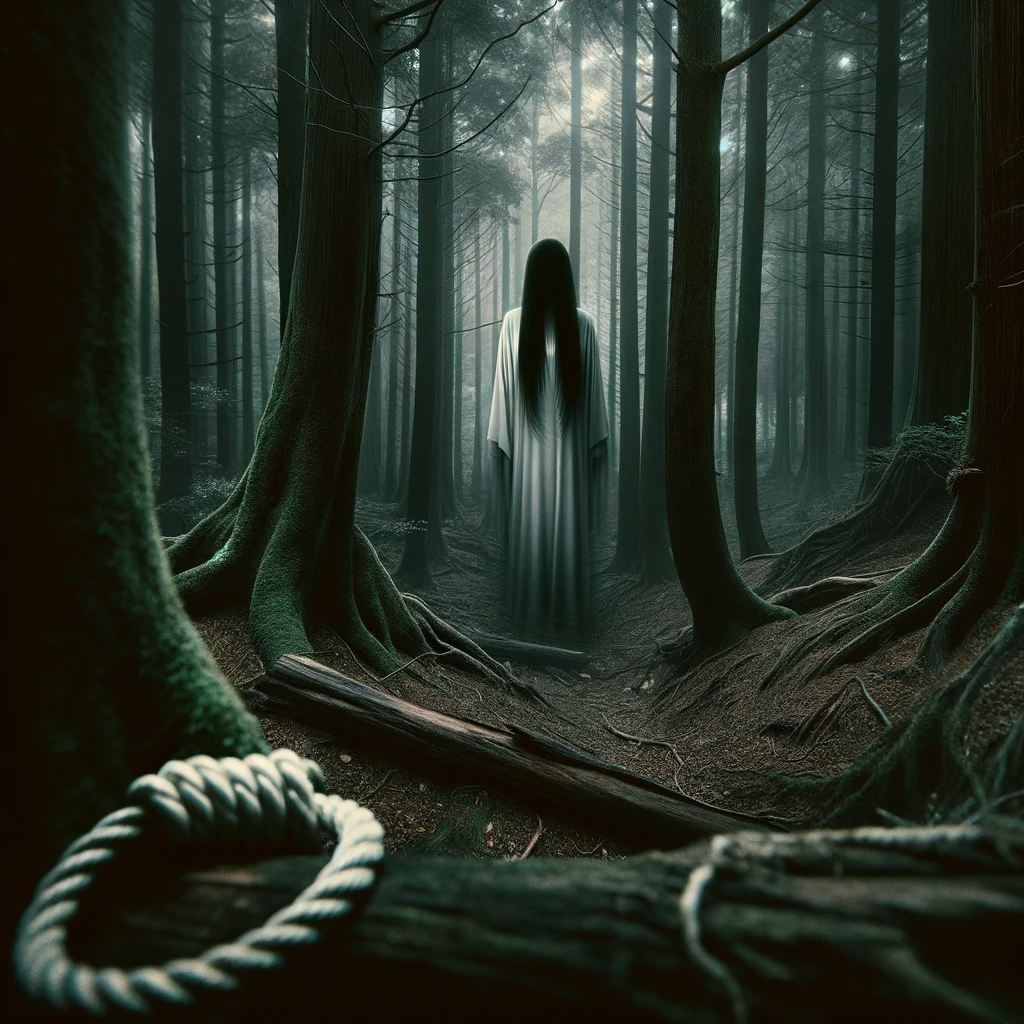
The Aokigahara Suicide Forest remains one of the more unusual and dark places in the world. Despite its tragic fame, it hides many secrets and unique features that attract both tourists and naturalists. However, it is always important to remember that it is also a place of suffering and personal tragedies brutally interrupting the lives of many Japanese right here, among the dense, tall, and silent trees of Aokigahara.
>>SEE SIMILAR ARTICLES:
Ikigai as Life's Navigation Where to Seek the Japanese Secret of Happiness?
Horror in Anime: How Animation Transports Deepest Fears onto the Screen
Yōkai and Kami: A Bestiary of Mythological Creatures of Japan in Anime
Vengeful Cat Demons in Japanese Legends: The Sinister Bakeneko
"Strong Japanese Women"
see book by the author
of the page
未開 ソビエライ
An enthusiast of Asian culture with a deep appreciation for the diverse philosophies of the world. By education, a psychologist and philologist specializing in Korean studies. At heart, a programmer (primarily for Android) and a passionate technology enthusiast, as well as a practitioner of Zen and mono no aware. In moments of tranquility, adheres to a disciplined lifestyle, firmly believing that perseverance, continuous personal growth, and dedication to one's passions are the wisest paths in life. Author of the book "Strong Women of Japan" (>>see more)
Personal motto:
"The most powerful force in the universe is compound interest." - Albert Einstein (probably)
Mike Soray
(aka Michał Sobieraj)
未開 ソビエライ
An enthusiast of Asian culture with a deep appreciation for the diverse philosophies of the world. By education, a psychologist and philologist specializing in Korean studies. At heart, a programmer (primarily for Android) and a passionate technology enthusiast, as well as a practitioner of Zen and mono no aware. In moments of tranquility, adheres to a disciplined lifestyle, firmly believing that perseverance, continuous personal growth, and dedication to one's passions are the wisest paths in life. Author of the book "Strong Women of Japan" (>>see more)
Personal motto:
"The most powerful force in the universe is compound interest." - Albert Einstein (probably)
Mike Soray
(aka Michał Sobieraj)
Write us...
Ciechanów, Polska
dr.imyon@gmail.com
___________________
inari.smart
Would you like to share your thoughts or feedback about our website or app? Leave us a message, and we’ll get back to you quickly. We value your perspective!

 The Location of Aokigahara at the Base of Mount Fuji
The Location of Aokigahara at the Base of Mount Fuji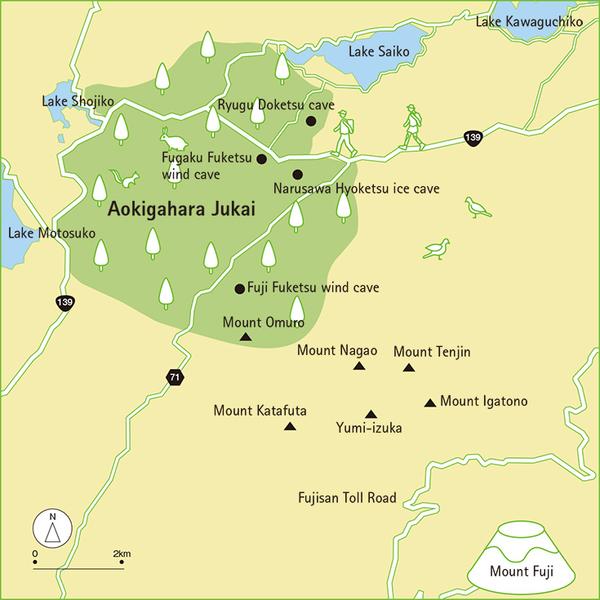 A Short History of the Forest
A Short History of the Forest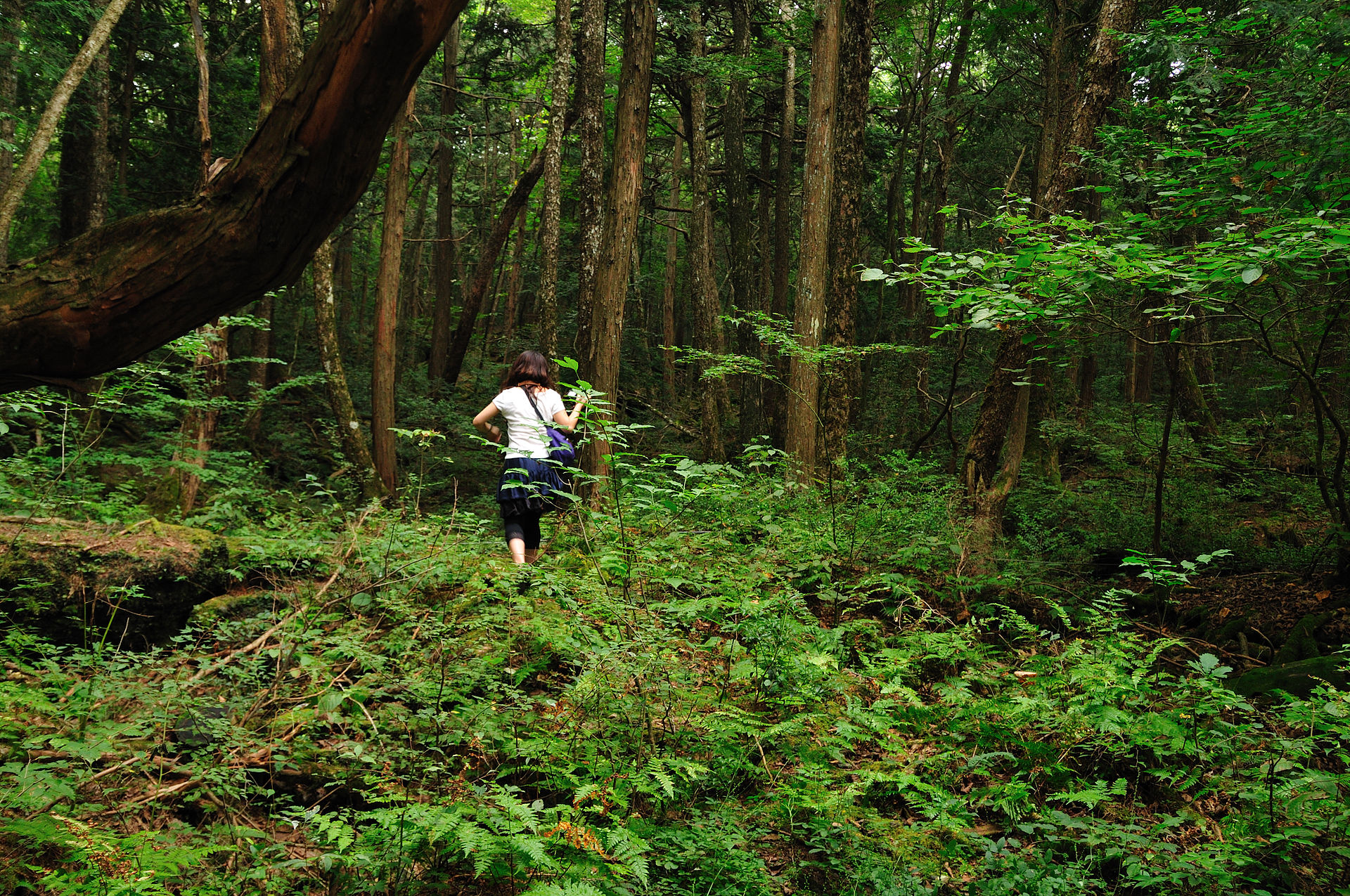
 Stories of Ubasute and Suicidal Practices
Stories of Ubasute and Suicidal Practices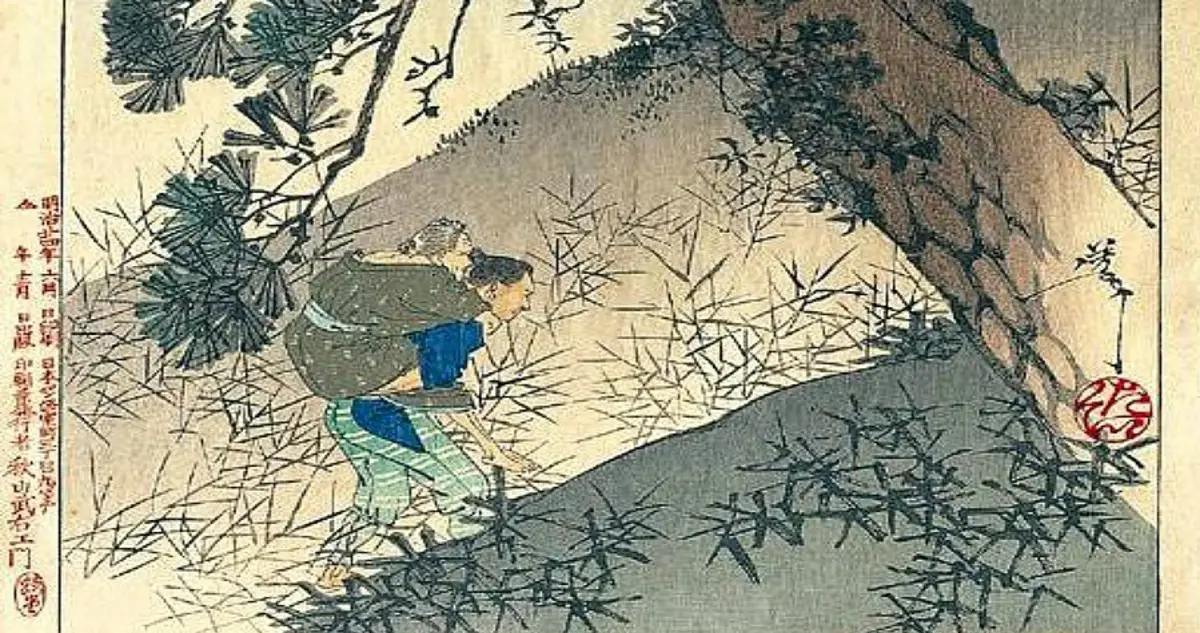
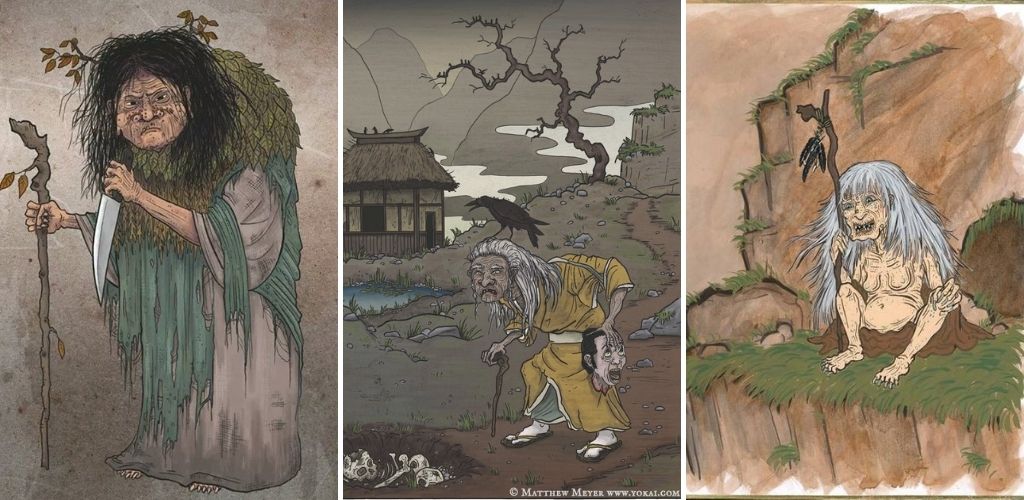
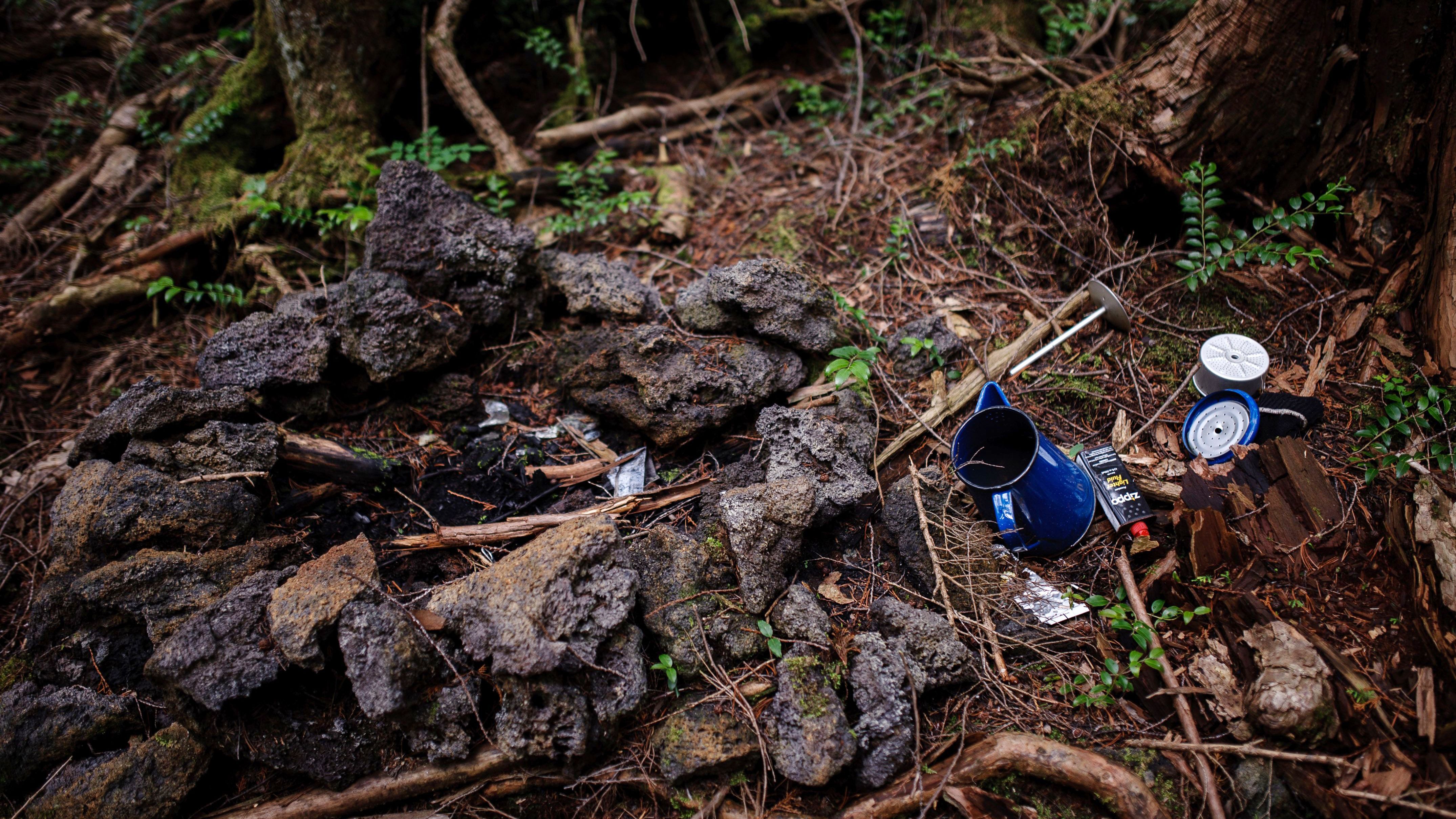 Footsteps Behind
Footsteps Behind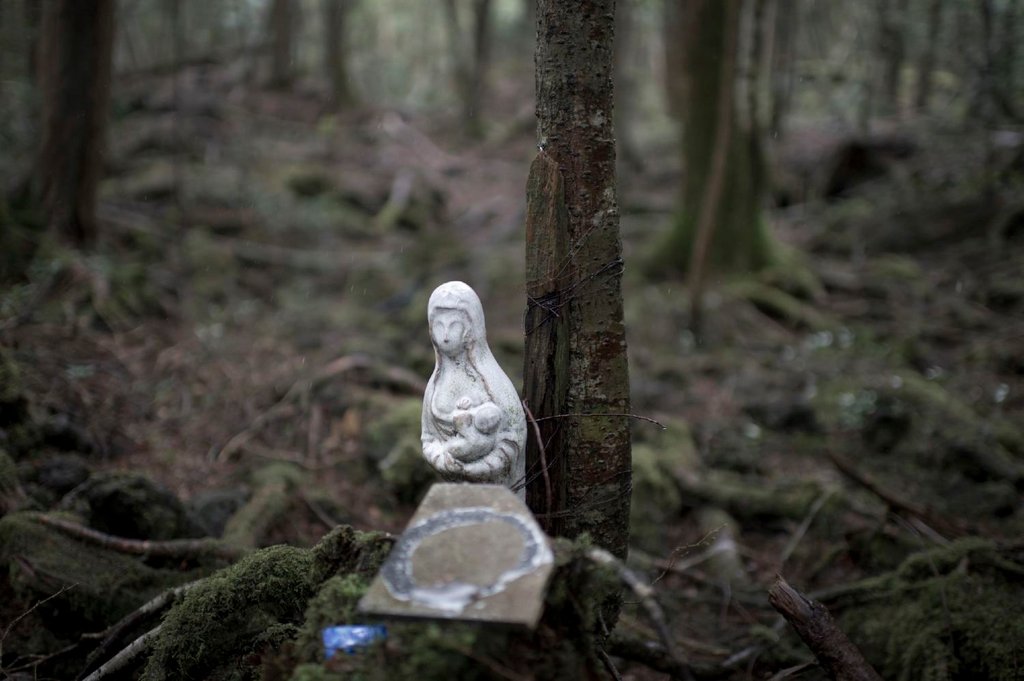 Ghoulish Laughter in the Silence
Ghoulish Laughter in the Silence "Aokigahara" (Manga, 2011, Iqura Sugimoto)
"Aokigahara" (Manga, 2011, Iqura Sugimoto) "The Forest" (Film, 2016, Jason Zada)
"The Forest" (Film, 2016, Jason Zada) "The Forest" (PC Game, 2014, Endnight Games)
"The Forest" (PC Game, 2014, Endnight Games)

